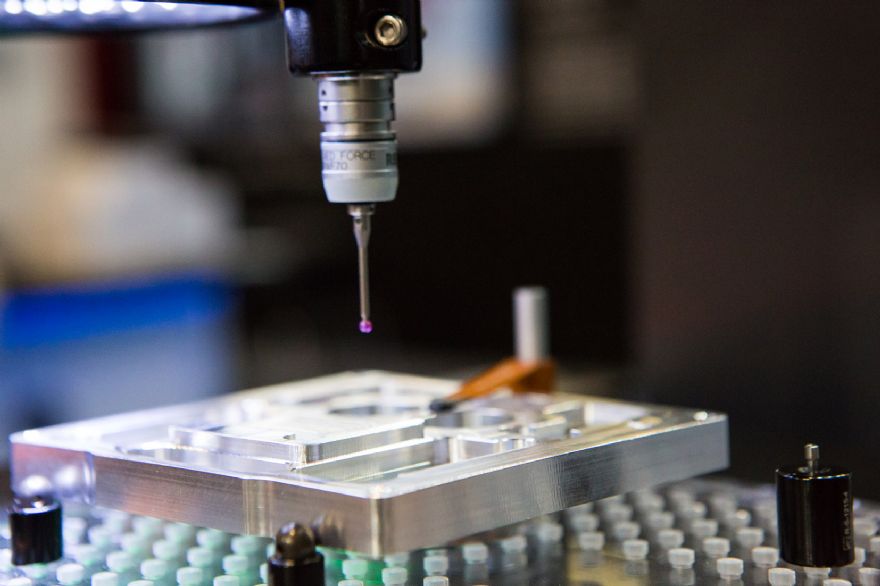
The UK manufacturing sector showed renewed signs of weakness at the start of the second quarter. April saw output and new orders slip back into contraction territory following short-lived upturns in March, as uncertain market conditions, client de-stocking and supply-chain disruption
(mainly relating to the Red Sea crisis) stymied opportunities for sustained expansion.
The seasonally adjusted S&P Global UK Manufacturing Purchasing Managers’ Index (PMI) fell to 49.1 in April, down from March's 20-month high of 50. Four of the five PMI constituents (output, new orders, employment and stocks of purchases) registered contractions. Longer supplier delivery times was the only variable to buck the negative trend on the PMI. However, this was largely a 'false positive', largely reflecting disruptions caused by the Red Sea crisis as opposed to stronger conditions driving up demand for raw materials (input buying activity actually fell during the latest survey month).
The latest contraction of production volumes – the 13th during the past 14 months – was mainly the result of output being scaled back in both the intermediate and investment goods industries. The link between market demand and the trend in production was highlighted by these two sectors
also seeing lower intakes of new business. In contrast, the performance of the consumer goods industry continued to strengthen, with output and new orders in this category rising for the second successive month (albeit at slower rates of growth).
Total new business placed with UK manufacturers contracted in April, amid signs of weaker demand from both domestic and overseas sources. The downturn in new export business extended to 27 successive months, with reports of weaker intakes from Germany, Ireland, Asia and the USA. Strong competition, distribution issues and cost increases were all factors contributing to lower new export order inflows.
Average purchasing costs rose for the fourth successive month in April, with the rate of increase accelerating to its highest since February 2023. Multiple inputs were reported to be up in price, with specific reference to higher costs for energy, polymers, steel, textiles, timber and transportation.
There were also reports citing increased shipping costs (Red Sea crisis), market forces and the pass-through of higher wages at suppliers. Manufacturers' selling prices rose in response, taking output charge inflation to an 11-month high. The continued subdued performance of the UK manufacturing sector was reflected in the labour market. Staffing levels were reduced for the nineteenth consecutive month. Job losses were mainly in the consumer and intermediate goods sub-industries, as employment rose in the investment goods category.
April saw weak demand, cost control initiatives, supply-chain disruptions and a preference for reduced stock holdings influence levels of purchasing activity and inventory holdings. Input buying volumes subsequently fellfor the 22nd month in a row, while stocks of both purchases and finished goods were further depleted. The decrease in holdings of inputs at warehouses was also affected by delays in receiving goods ordered from suppliers. Average vendor lead times lengthened for the fourth month running, amid continued reports of disruption caused by the Red Sea crisis.
The outlook for the UK manufacturing sector remained positive in April. Over half of companies (52%) forecast that output would increase over the coming year, compared to only 8% anticipating a decline. Optimism was linked to hopes for a revival in demand, new product launches, efficiency
gains and an improvement in market conditions.
Rob Dobson, director at S&P Global Market Intelligence, said: “The UK manufacturing sector suffered a renewed downturn in April, as output and new orders contracted following short-lived rebounds in March. The sector is still besieged by weak market confidence, client de-stocking and disruptions caused by the ongoing Red Sea crisis, all of which are contributing to reduced inflows of new work
from domestic and overseas customers, with specific reports of difficulty securing new contract wins from Europe, the US and Asia.
“The downturn is also sustaining cost caution at manufacturers, leading to lower employment, stock
holdings and cutbacks in purchasing activity. The news on the prices front is also worrisome for those looking for a sustainable path back to target (consumer price) inflation, with cost pressures growing in industry and feeding through to higher selling prices at the factory gate.”